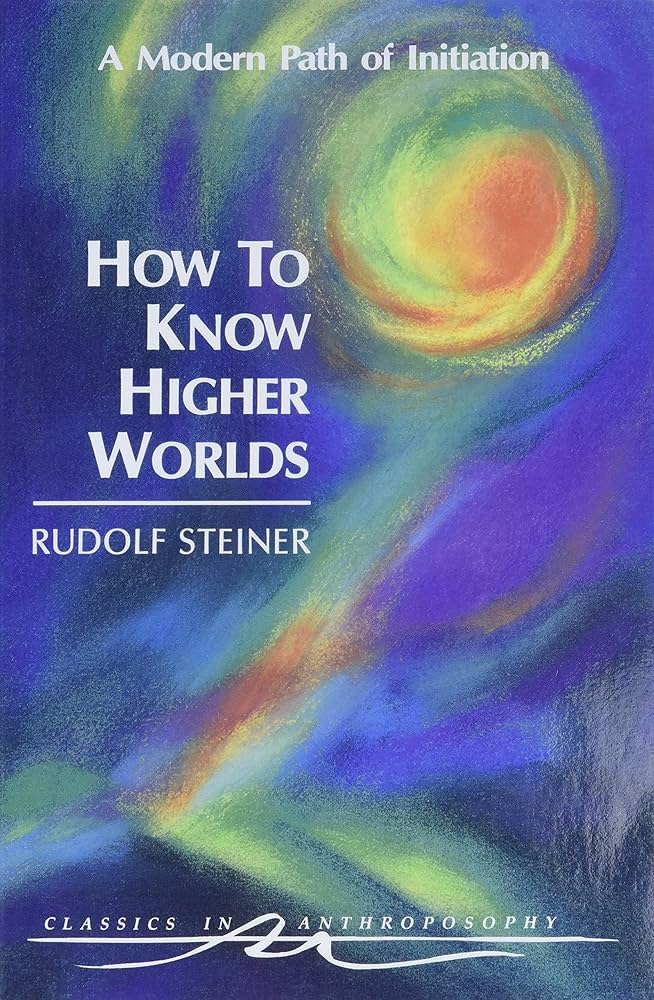Table of Contents
Philosophy as Inner Development
In How to Know Higher Worlds, Rudolf Steiner reframes philosophy as a discipline of transformation rather than abstraction. First published in 1904, this work is a cornerstone of spiritual science (Geisteswissenschaft), offering a systematic path of conscious spiritual awakening. It is not mysticism in the passive, vague sense, but a rigorous training of thought, feeling, and will—a philosophy of initiation.
Steiner’s modern esotericism blends the clarity of German idealism with direct experiential knowledge of spiritual realities, bridging Eastern and Western wisdom within a Western esoteric-Christian framework.
Core Themes: Inner Work, Perception, and Moral Development
The Call to Conscious Development
Steiner asserts that higher knowledge is not the privilege of the few—it is the latent potential of all human beings. But accessing the spiritual worlds requires preparation: the inner life must be cultivated with the same discipline applied to outer science.
The book begins with the moral foundation: reverence, inner calm, and devotion to truth. The student must not seek the spiritual out of curiosity or ambition, but out of a sincere desire for truth and service.
The Threefold Path: Thought, Feeling, Will
Steiner’s path of initiation harmonizes the three primary faculties of the soul:
- Thinking is purified through concentration and meditative exercises.
- Feeling is deepened into spiritual reverence and equanimity.
- Will is strengthened by disciplined action and inner resolve.
Each faculty becomes a spiritual organ of perception, capable of perceiving the higher worlds—what Steiner calls the etheric, astral, and spiritual realms.
Imaginative Cognition and Spiritual Science
Through meditative training and what Steiner calls “exact clairvoyance”, the initiate begins to develop imaginative perception—a direct, conscious encounter with living archetypes. This is not hallucination but a form of higher cognition, as rigorous and structured as scientific inquiry.
Spiritual science is thus not anti-rational; it expands reason into the super-sensible domain through moral purification and inner discipline.
The Role of the Teacher and the Community
While inner development is deeply personal, Steiner also emphasizes the importance of the teacher (initiator). The teacher is not a guru but a guide—an experienced soul who aids in stabilizing the path.
Equally important is ethical maturity: pride, egotism, and emotional instability are dangers on the path. One must grow in selfless love, truthfulness, and courage to progress.
Influence and Legacy
How to Know Higher Worlds is a foundational text in Anthroposophy, the movement Steiner founded. Its influence spans:
- Waldorf education and child development
- Biodynamic agriculture
- Eurythmy (spiritual movement art)
- Spiritual psychology and medicine
Steiner’s ideas prefigure many holistic, integrative models of human development and are respected (or debated) in philosophical, spiritual, and educational circles.
Strengths and Limitations
Strengths:
- Systematic, clear steps toward spiritual perception
- Integrates moral, intellectual, and practical disciplines
- Bridges the gap between philosophy, science, and mysticism
Limitations:
- Requires a sympathetic stance toward spiritual reality to fully engage
- Some may find Steiner’s terminology and cosmology opaque or esoteric
- The modern scientific reader may struggle with the non-empirical framework
Who Should Read It?
- Seekers of a structured spiritual path rooted in Western esotericism
- Readers of Kant, Goethe, Hegel, and interested in the evolution of consciousness
- Educators, artists, or scientists seeking to integrate ethical and intuitive dimensions
- Anyone dissatisfied with materialist explanations of human development
TL;DR
How to Know Higher Worlds is not a vague call to mysticism but a methodical path to conscious spiritual knowledge. Steiner revitalizes philosophy by grounding it in reverent observation, inner effort, and moral evolution. For those willing to take its disciplines seriously, the book offers a portal to higher cognition and a richer humanity.

Leave a Reply